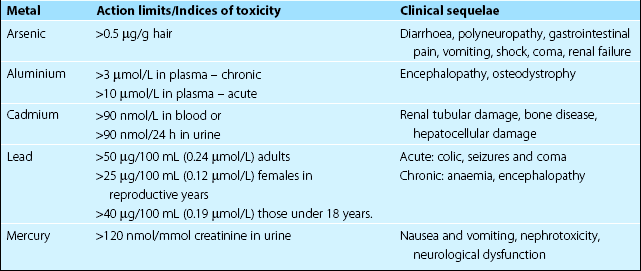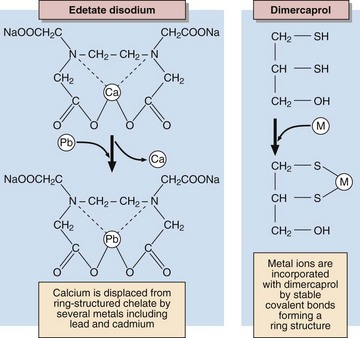61 The metals that give rise to clinical symptoms in man are shown in Table 61.1. Apart from the occasional suicide or murder attempt, most poisonings are due to environmental contamination or administration of drugs, remedies or cosmetics that contain metal salts. There are three main clinical effects of exposure to toxic metals. These are: renal tubular damage, gastrointestinal erosions and neurological damage. Blood, plasma, serum or urine can all be used for measurement, and in some cases it may also be helpful to measure the metal concentration in other tissues such as hair. The action limits for metals in plasma and urine are shown in Table 61.1. As with most poisons, treatment consists of removal of the source of the metal and increasing the elimination from the body, while correcting deranged physiological or biological mechanisms. Removal of the source may require that a person be removed from a contaminated site or workplace or that the use of a medication or cosmetic be discontinued. Elimination of heavy metals is achieved by treatment with chelating agents that bind the ions and allow their excretion in the urine (Fig 61.1).
Metal poisoning
Metals associated with poisoning
Diagnosis
Treatment
Metal poisoning








